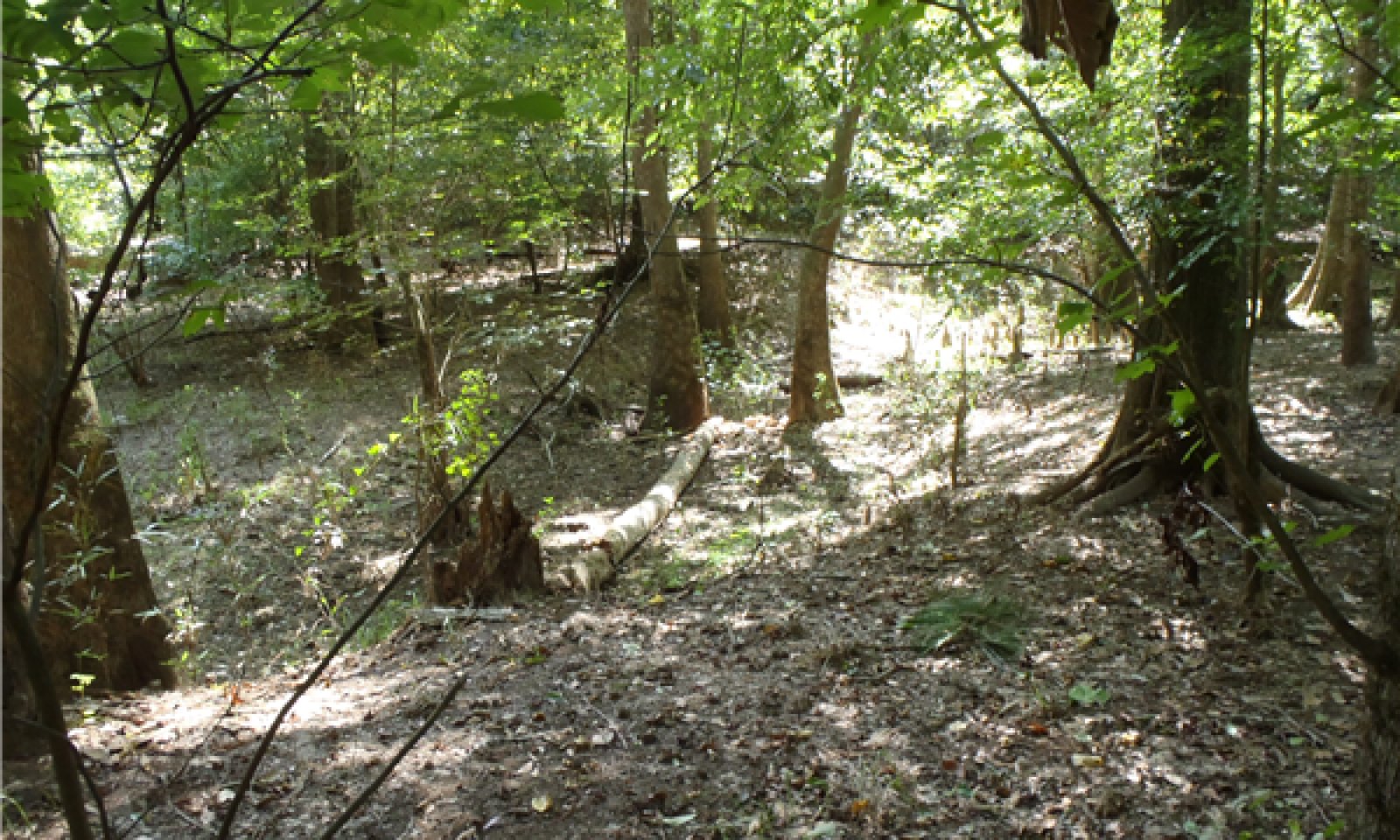
Well Drained Bottomland
Scenario model
Current ecosystem state
Select a state
Management practices/drivers
Select a transition or restoration pathway
-
Transition T1A
Introduction of non-native Chinese tallow
More details -
Transition T1B
harvested by clearcut and planted monoculture of pine or hardwood trees.
More details -
Restoration pathway R2A
Mechanical and chemical removal of Chinese tallow
More details -
Transition T1A
harvested by clearcut and planted to a monoculture of pine or hardwood trees
More details -
Restoration pathway R3A
Selective harvest coupled with reintroduction of native species
More details -
No transition or restoration pathway between the selected states has been described
Target ecosystem state
Select a state
Description
The Well Drained Bottomland is a Loblolly Pine/American Beech Forest. The deep well drained sandy and loamy soils are rapidly permeable. This is unique because the sites receive flood water, but the site does not stay saturated for lengthy periods. Plants that are adapted to flooding, as well as lengthy dry periods, inhabit these bottomlands. Fires are infrequent to the area, estimated between 10 and 20 years when the surrounding uplands burn or dry conditions exists. The sites generally have moderate to heavy overstory canopy ranging from 75 to 95 percent. Basal areas area high, ranging from 85 to over 115 square feet per acre.
Submodel
Description
Chinese tallow (Triadica sebifera) is an undesired, invasive species brought to the United States in 1776 (Randall and Marinelli, 1996). Rapid expansion along the gulf coastal states has allowed the species to invade many ecosystems and consequently reduce diversity. Tallow trees are known to cause gastrointestinal upset, contact dermatitis, and toxicity in livestock and humans. Mechanical and chemicals options exist as a means to control the trees.
Submodel
Mechanism
The transition from State 1 to State 2 is a result of occupancy by Chinese tallow or other noxious weeds. Invasive plants outcompete, and eventually choke out, all other native species.
Mechanism
The transition is due to the land manager maximizing silviculture potential. Merchantable timber is harvested by clearcut, the site prepared and planted to a monoculture of pine or hardwood trees.
Mechanism
The driver for restoration is control of Chinese tallow. Although an option, mechanical removal of the trees is difficult because they readily regrow from roots and seeds. Several chemicals methods are available including glyphosate for cut-stump treatments, triclopyr for cut-stump and foliar treatments, imazamox for broad spectrum application, and imazapyr as a foliar spray. Many aquatic herbicides have water use restrictions and can potentially kill hardwoods, so labels and restrictions should be read carefully prior to application.
Mechanism
The transition is due to the land manager maximizing silviculture potential. Merchantable timber is harvested by clearcut. Then, the site is prepared and planted to a monoculture of pine or hardwood trees.
Mechanism
When restoring a plantation, the land manager can either clearcut the timber and begin as in the previous example. Otherwise, gap-phase regeneration is possible through selective timber harvests. This involves replanting the desired overstory species in small openings within the current structure of the woodland. The benefit is a slow progression of restoration instead of starting from primary succession.
Model keys
Briefcase
Add ecological sites and Major Land Resource Areas to your briefcase by clicking on the briefcase (![]() ) icon wherever it occurs. Drag and drop items to reorder. Cookies are used to store briefcase items between browsing sessions. Because of this, the number of items that can be added to your briefcase is limited, and briefcase items added on one device and browser cannot be accessed from another device or browser. Users who do not wish to place cookies on their devices should not use the briefcase tool. Briefcase cookies serve no other purpose than described here and are deleted whenever browsing history is cleared.
) icon wherever it occurs. Drag and drop items to reorder. Cookies are used to store briefcase items between browsing sessions. Because of this, the number of items that can be added to your briefcase is limited, and briefcase items added on one device and browser cannot be accessed from another device or browser. Users who do not wish to place cookies on their devices should not use the briefcase tool. Briefcase cookies serve no other purpose than described here and are deleted whenever browsing history is cleared.
Ecological sites
Major Land Resource Areas
The Ecosystem Dynamics Interpretive Tool is an information system framework developed by the USDA-ARS Jornada Experimental Range, USDA Natural Resources Conservation Service, and New Mexico State University.
